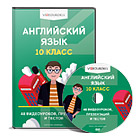— Hello, our dear friends! My name is Martin Green. This is James Wilson.
— And my name is Nathaniel Fleming.
— Welcome to our grammar lesson!

— Two days ago, James, Nathaniel and I decided to go to the concert of one young and famous man.
— When we got there, we saw a crowd of people.

— But only one unknown man drew our attention.
— He was talking to a security guard.
— We heard their conversation, because they were talking so loudly.
— Yeah! They had to talk like that, because the artist was singing his song.
— It was really noisy out there.
— Now, please, listen to the conversation between the man and the security guard. This will help you to guess the topic of our lesson.
— Excuse me, sir!
— Yes, how can I help you?
— Well… I came to the concert, because my friends had given me this ticket for my birthday.
— That’s great, but I don’t see any problems with that!
— Oh, no… there are no problems at all. I just heard that this singer is very popular, but I don’t even know his name.
— Oh, I see. His name is Logan Davis.
— Thank you, sir. But… If it's no bother, could you tell me a few things about him, please?
— Sure! What do you want to know?
— Well… Is he from the London?
— No, he came from the Spain.
— Oh, it’s so cool. I really liked his song about the Hudson Bay.
— Yeah, it’s one of his best songs.
— You know what? I think I’m already his fan.
— Ha-ha…
— Thank you so much for your help!
— No problem.
— When we heard their talk, we were in shock.
— They made so many mistakes in their conversation.
— Yes, they used the article the where we cannot use it.
As you can understand, today in the lesson we will:
· revise the use of articles with geographical names;
And
· discuss the use of articles with place names.
— Before we talk about articles with geographical names and place names, let’s revise the definition of the term “article”.
— We will also remind you about the types of articles.
Articles are the words that define a noun as specific or unspecific.
Let’s compare the following examples:
After the PE lesson, the glass of water tasted particularly good.
(By using the article “the”, we have shown that it was one specific PE lesson and one specific glass of water that tasted good).
After a PE lesson, a glass of water tastes particularly good.
(By using the article “a”, we have created a general statement, implying that any glass of water would taste good after any PE lesson).
There are two types of articles: definite and indefinite.
The definite article is the word the.
For example: the hammer, the wheel.
The indefinite article has two forms.
The first form is the word a.
The second form is the word an.
For example: a thunderstorm, an operation.
— Now let’s talk about articles with geographical names and place names.
— We will tell you when we need to use articles with them and when we don’t.
— This will help you to understand the mistakes which the man and the security guard made at the concert.
1. We don’t need to use articles with the names of different countries, cities, towns, villages and provinces.
For instance:
This vase was made in China.
Veronica came from Norway.
The exceptions are:
the Hague;
the Vatican;
the Congo;
the Argentina;
the Sudan;
the Yemen.
But…
Pay attention! We need to use the definite article “the” with the names of the countries in the plural form.
For example:
the Philippines, the Netherlands, etc.
We also use “the” with the names of the countries that include the following words: “state”, “kingdom”, “republic”, “federation”, “emirates”, “union”. These words mean that the country is a group of smaller states.
For example:
the United States of America;
the United Kingdom;
the Russian Federation;
the Republic of Ireland;
the United Arab Emirates;
the Union of Soviet Socialist Republics and so on.
2. We don’t use articles with the names of the seven continents.
For example:
Asia, Australia, Europe, Africa, North America, South America and Antarctica.
3. The article “the” is used with the names of different rivers, lakes, oceans, seas, waterfalls, straits, canals and bays.
For example:
the Missouri;
the Michigan;
the Atlantic Ocean;
the Black Sea;
the Strait of Dover;
the Panama Canal;
the Niagara Fall;
the Bay of Bengal, etc.
The exceptions are: Hudson Bay, Mexican Bay, San Francisco Bay.
Pay attention! We don’t use “the” with the names of lakes when they contain the word “lake”.
Let’s compare the following two sentences:
1. Lake Victoria is the largest lake in Africa.
And
2. The Victoria is the largest lake in Africa.
As you can see, we didn’t use the article in the first sentence, because it includes the word “lake”.
4. We use the definite article “the” with the names of regions and poles.
For instance:
the North Pole;
the South Pole;
the Far East and so on.
5. We don’t use articles with the names of islands and mountains, but we use “the” with mountain ranges and the groups of islands.
The exceptions are:
the Isle of Man, the Isle of Capri.
Now let’s compare the following examples:
Palawan is the fifth largest island of the Philippines.
And
Max, Oliver and Kyle went to the Canary Islands.
(In the first sentence we are talking about one island, and in the second – about the group of islands).
The following sentences.
Robin saw mountain Whitney from the bus.
And
The Alps are the highest mountain range system in Europe.
(In the first sentence we are talking about one mountain, and in the second – about the mountain range).
6. We don’t use “the” with the names of volcanoes.
For instance:
Vesuvius;
Kilimanjaro;
Fujiyama, etc.
7. The definite article “the” is used with the names of deserts.
For example:
the Gobi Desert, the Kalahari Desert, the Sahara Desert, the Arabian Desert and so on.
8. We don’t use articles with the names of parks, squares, streets and avenues.
The exceptions are:
the Mall, the Strand, the Wall Street, the High Street.
For instance:
Regent’s Park;
Yellowstone National Park;
Grand Canyon National Park;
Bushy Park;
Trafalgar Square;
Harvard Square;
Red Square;
Bond Street;
Lime Street;
Carnaby Street;
Pennsylvania Avenue;
Woodlands Avenue.
9. The definite article “the” is also used with the names of museums, theatres, cinemas and galleries.
Let’s look at the examples:
the British Museum;
the Louvre Museum;
the Vatican Museum;
the Coliseum Theatre;
the National Film Theatre;
the Odeon;
the Regent Street Cinema;
the Tate Gallery;
the National Gallery.
10. We don’t use articles with the names of schools, colleges and universities.
The exceptions are:
the George Washington University, the John Hopkins University, the Sorbonne.
Look at the following examples:
Melbourne School of Design;
Pomfret School;
Lincoln Elementary School;
Carnegie College;
Boston College;
Trinity College;
Cambridge University;
Ohio State University;
Oxford University.
11. We don’t need to use articles with the names of churches and cathedrals.
For example:
St. John's Church, High Desert Church, St. Paul's Cathedral, Canterbury Cathedral, York Minster Cathedral.
12. The definite article “the” isn’t used with the names of stations and airports.
For example:
Broadway Station, Victoria Station, Heathrow Airport, Kennedy Airport, Frankfurt International Airport.
— Now you know when we need to use articles with geographical names and place names.
— You also know when we cannot use “the” with them.
— That’s all for today, boys and girls.
— We really hope that our lesson was interesting and useful for you.
— See you soon, our dear friends.

 Получите свидетельство
Получите свидетельство Вход
Вход





 1360
1360

